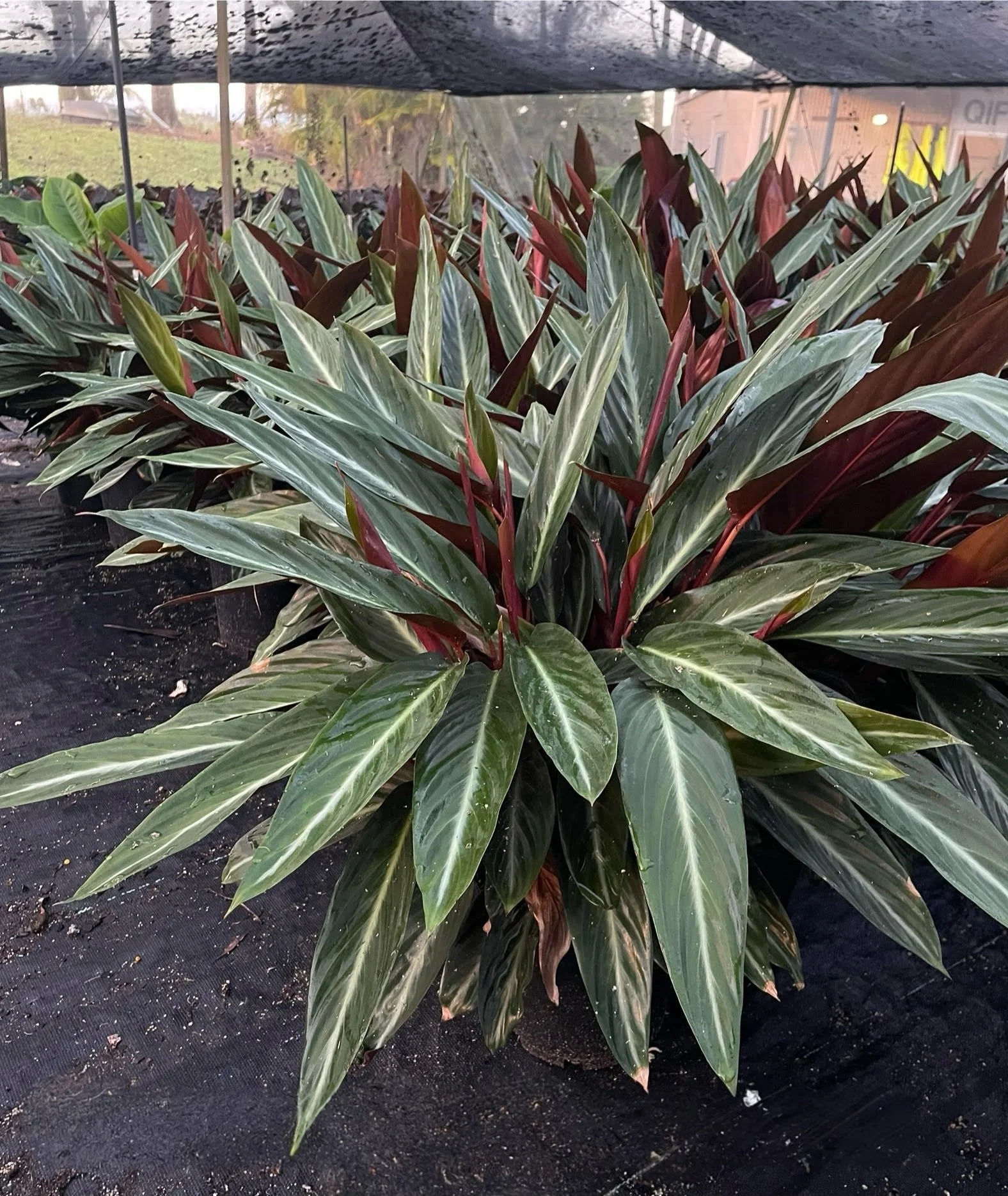 Image 1 of 1
Image 1 of 1


Stromanthe Sanguinea 200
🌿 Stromanthe sanguinea
Common Names: Stromanthe, Tricolor Stromanthe, Stromanthe 'Triostar' (cultivar)
Family: Marantaceae (Prayer Plant family)
Native to: Rainforests of Brazil
Type: Tropical, rhizomatous, evergreen perennial
---
🍃 Foliage
Large, lance-shaped leaves with stunning multicolored variegation.
Leaf tops are usually a blend of green, cream/white, and pink; undersides are a rich burgundy to deep magenta.
Color intensity is highest in bright, indirect light.
Like other members of the Marantaceae family, the leaves exhibit nyctinasty — they fold upward at night like praying hands (hence the “prayer plant” group).
---
🌱 Growth Habit
Grows as a clumping plant from underground rhizomes.
Typically reaches 60–90 cm (2–3 feet) in height and width when mature.
Fairly fast-growing in the right conditions.
---
🌼 Flowers
May produce tubular red or pink flowers, but these are small and not the main attraction.
Blooming is rare indoors and usually occurs only under ideal conditions.
---
💧 Care Requirements
Condition Requirement
Light Bright, indirect light — too little causes fading; too much direct sun can scorch leaves.
Water Keep soil consistently moist, but not soggy. Avoid letting it dry out completely.
Humidity High humidity (60% or higher) is essential. Use a humidifier or pebble tray if needed.
Soil Rich, well-draining potting mix — ideally peat-based with perlite.
Temperature Warmth-loving: ideal range is 18–27°C (65–80°F). Keep away from drafts or cold windows.
Fertilizer Feed monthly in spring–summer with a balanced liquid fertilizer at half strength.
---
✂️ Maintenance
Remove browned or damaged leaves at the base.
Clean dust off leaves regularly to allow better photosynthesis.
Can be divided during repotting to propagate.
---
📝 Notes & Appeal
Stromanthe sanguinea 'Triostar' is the most commonly grown cultivar, loved for its painterly foliage.
Can be a bit fussy about humidity and watering but thrives with consistent care.
A showstopper in indoor plant collections, especially when used as a feature plant.
🌿 Stromanthe sanguinea
Common Names: Stromanthe, Tricolor Stromanthe, Stromanthe 'Triostar' (cultivar)
Family: Marantaceae (Prayer Plant family)
Native to: Rainforests of Brazil
Type: Tropical, rhizomatous, evergreen perennial
---
🍃 Foliage
Large, lance-shaped leaves with stunning multicolored variegation.
Leaf tops are usually a blend of green, cream/white, and pink; undersides are a rich burgundy to deep magenta.
Color intensity is highest in bright, indirect light.
Like other members of the Marantaceae family, the leaves exhibit nyctinasty — they fold upward at night like praying hands (hence the “prayer plant” group).
---
🌱 Growth Habit
Grows as a clumping plant from underground rhizomes.
Typically reaches 60–90 cm (2–3 feet) in height and width when mature.
Fairly fast-growing in the right conditions.
---
🌼 Flowers
May produce tubular red or pink flowers, but these are small and not the main attraction.
Blooming is rare indoors and usually occurs only under ideal conditions.
---
💧 Care Requirements
Condition Requirement
Light Bright, indirect light — too little causes fading; too much direct sun can scorch leaves.
Water Keep soil consistently moist, but not soggy. Avoid letting it dry out completely.
Humidity High humidity (60% or higher) is essential. Use a humidifier or pebble tray if needed.
Soil Rich, well-draining potting mix — ideally peat-based with perlite.
Temperature Warmth-loving: ideal range is 18–27°C (65–80°F). Keep away from drafts or cold windows.
Fertilizer Feed monthly in spring–summer with a balanced liquid fertilizer at half strength.
---
✂️ Maintenance
Remove browned or damaged leaves at the base.
Clean dust off leaves regularly to allow better photosynthesis.
Can be divided during repotting to propagate.
---
📝 Notes & Appeal
Stromanthe sanguinea 'Triostar' is the most commonly grown cultivar, loved for its painterly foliage.
Can be a bit fussy about humidity and watering but thrives with consistent care.
A showstopper in indoor plant collections, especially when used as a feature plant.